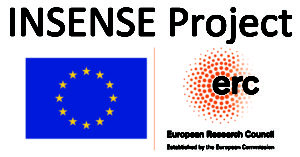Hickey, Acunzo, & Dell (in press). Suppressive Control of Incentive Salience in Real-World Human Vision. The Journal of Neuroscience. <link>
Reward-related activity in the dopaminergic midbrain is thought to guide animal behaviour, in part by boosting the perceptual and attentional processing of reward-predictive environmental stimuli. In line with this incentive salience hypothesis, studies of human visual search have shown that simple synthetic stimuli – like lines, shapes, or Gabor patches – capture attention to their location when they are characterized by reward-associated visual features like colour. In the real world, however, we commonly search for members of a category of visually-heterogenous objects – like people, cars, or trees – where category examples do not share low-level features. Is attention captured to examples of a reward-associated real-world object category? Here, we have human participants search for targets in photographs of city- and landscapes that contain task-irrelevant examples of a reward-associated category. We use the temporal precision of EEG machine learning and ERPs to show that these distractors acquire incentive salience and draw attention, but do not capture it. Instead, we find evidence of rapid, stimulus-triggered attentional suppression, such that the neural encoding of these objects is degraded relative to neutral objects. Humans appear able to suppress the incentive salience of reward-associated objects when they know these objects will be irrelevant, supporting the rapid deployment of attention to other objects that might be more useful. Incentive salience is thought to underlie key behaviours in eating disorders and addiction, among other conditions, and the kind of suppression identified here likely plays a role in mediating the attentional biases that emerge in these circumstances.
Read More